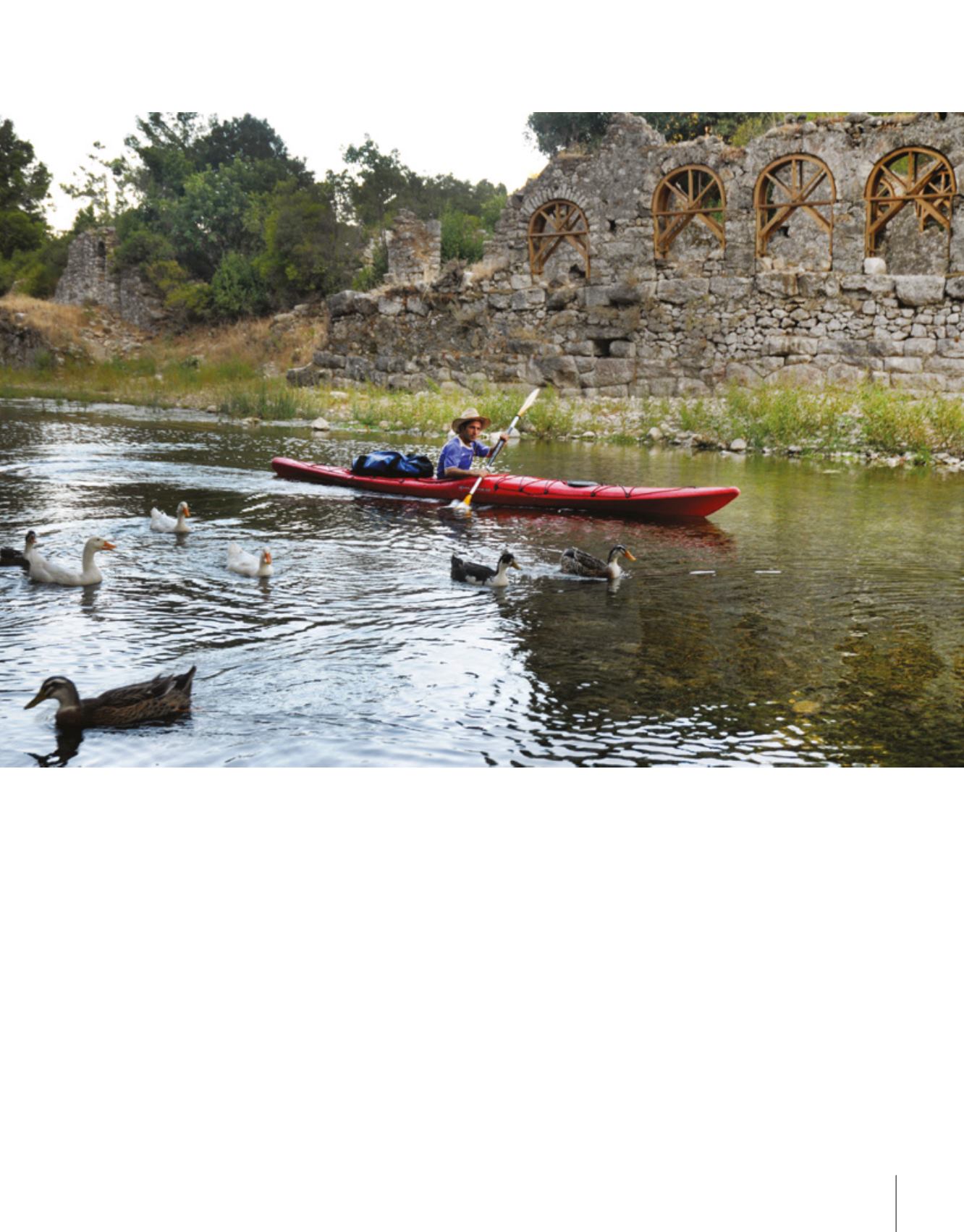
93
hostels and restaurants cannot
be noticed among the oleanders
and citrus trees. Today, all of
Olympos is under protection as
an archeological and natural
protection site with its impressive
wilderness. A significant portion
of the Lycian Way which is the
longest trekking path of our
country with a length of about 509
kilometers is located around the
vicinity of Olympos. These routes
were marked with red and white
markers during the work carried
out in recent years and signposts
showing the way have been
placed; therefore one encounters
no difficulty while trekking there.
Believe us when we say that
you will not feel any chills when
you raise your head and see
the stars so close in the pitch
black of the night and when you
swim at night to take a journey to
the deepest parts of your soul.
You will come back here even if
you trace history on the Lycian
Way passing through Olympos.
Because Olympos is simply “very
beautiful”…
Mythology
The region located in the Bey
Mountains National Park between
eastern Fethiye and western
Antalya was home to the Lycia
Union at about 2nd century
B.C. which was one of the most
important civilizations in Anatolia.
One of the strongest cities of
the Lykia Union, also known as
the “Country of Light”, along
the Mediterranean coast was
Olympos. The ruins of the city
established on the two banks of
Akdere flowing between Musa
Mountain and OMurga Mountain
is almost hidden from view thanks
to the fertile nature of the region.
The city is thought to have been
established at around the 3rd
century B.C. and was included
in the Lycia Union during the 2nd
century B.C. Olympos becomes
one of the six most important
cities of the union in a short
period of time and its history
is darkened by a pirate named
Zeniketes who uses this region
as his base. Zeniketes plunders
all the villages from Tarsus to
Olympos as well as the Roman
ships passing from the region
after which he declares Olympos
as the capital of his kingdom
causing the city to be removed
from the Lykia Union. Olympos is
subject to heavy punishment for
cooperation with pirates after the
Roman army throws Zeniketes out
of the region. Olympos returns to
its previous period of glory during
the Byzantine reign expressed
by Cicero as the “ancient
prosperous city” which is then
abandoned completely in the 15th
century. The Lykian sarcophagi,
vaulted grave rooms, public baths
and theater ruins dating back
to those times are now spread
out over a wide area covered
with scrubs and bay trees. The
sarcophagus of the Cilician
Captain Eudemos of Olympos is
the most interesting one among
these ruins. There is an engraving
of a ship on the sarcophagus
inside the grave room facing the
Çıralı entrance ticket office with a
poem inscribed on it: "He entered
the last port of no return, because


